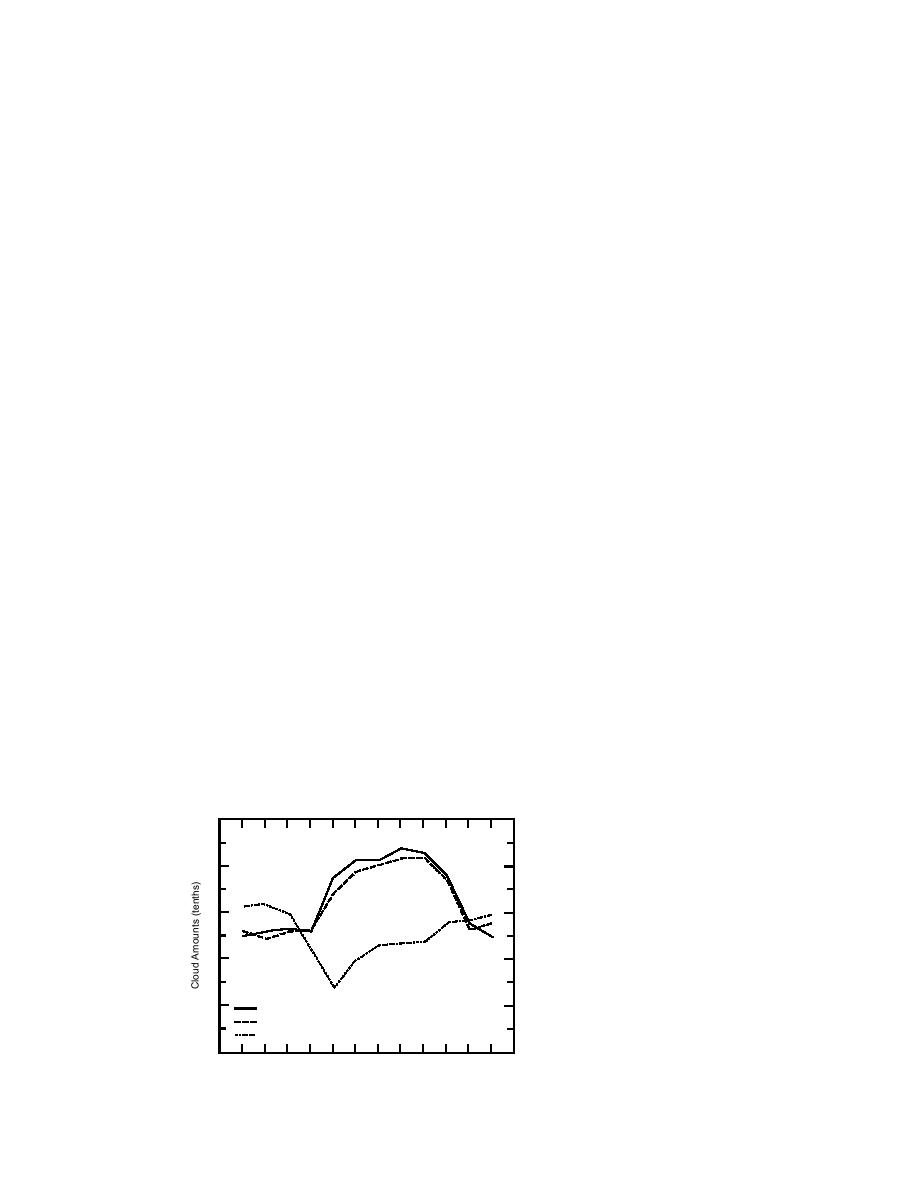
Accounting for Clouds in Sea Ice Models
ALEKSANDR P. MAKSHTAS, EDGAR L ANDREAS,
PAVEL N. SVYASHCHENNIKOV, AND VALERY F. TIMACHEV
INTRODUCTION
Clouds play a dominant role in determining shortwave and longwave radia-
tion transfer in the atmosphere. Cloud area, height, thickness, and water content,
among other properties, all influence the radiative fluxes (Curry and Ebert 1990).
For sea ice modeling in polar regions, having an adequate description of the cloud
cover is especially important for estimating the radiative fluxes at the snow or sea
ice surface, because surface melting and ice growth are quite sensitive to short-
wave and longwave radiation (Maykut and Untersteiner 1971, Curry and Ebert
1990). In turn, the phase changes and heat storage in the snow or ice cover set the
intensity of the surface turbulent and radiative fluxes and the conductive flux into
the ice (Makshtas 1991a). As a result, there is a strong climatic feedback between
the sea ice and the albedo in polar regions (Barry 1984).
Despite the intensive development of methods for remotely sensing the atmo-
sphere, the main source of data on the climatic characteristics of Arctic cloudiness
is still in-situ visual observations. Though polar-orbiting satellites frequently cross
the Arctic, the small image contrast between the ice cover and the clouds in the
visible in summer and in the infrared in winter makes using satellite information
difficult for estimating cloudiness in polar regions, as Raschke (1987) explains.
Figure 1 illustrates this problem. It shows cloud amounts deduced from satellite
10
Figure 1. Annual variation in
8
monthly averaged total cloud
amount over the Arctic Ocean
on the basis of satellite data,
6
v i s u a l observations on the
North Pole drifting stations,
4
and the cloud climatology pub-
lished by Warren et al. (1988).
2
The satellite and Warren et al.
North Pole Stations
Warren et al. (1988)
traces derive only from grid
Satellites
points north of 80N. (Adapted
0
Jan
Mar
May
Jul
Sep
Nov
from Moritz et al. 1993.)
Feb
Apr
Jun
Aug
Oct
Dec



 Previous Page
Previous Page
